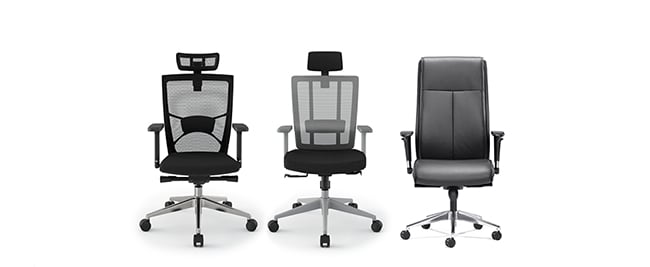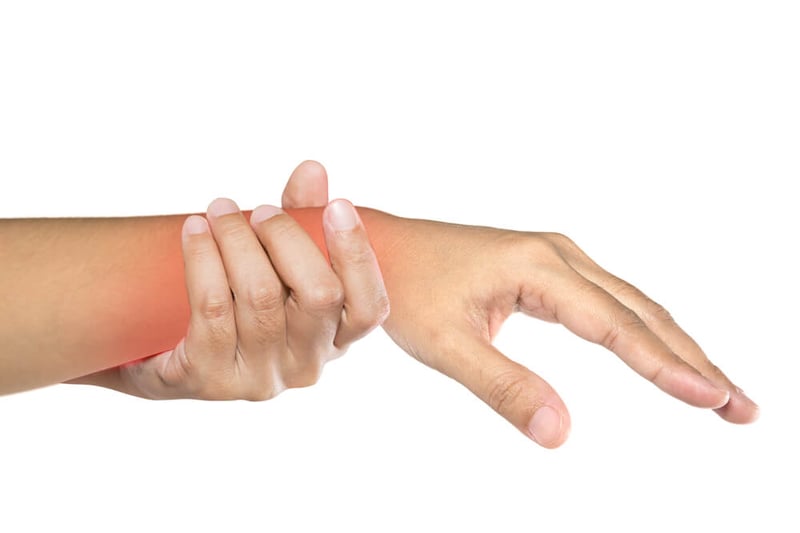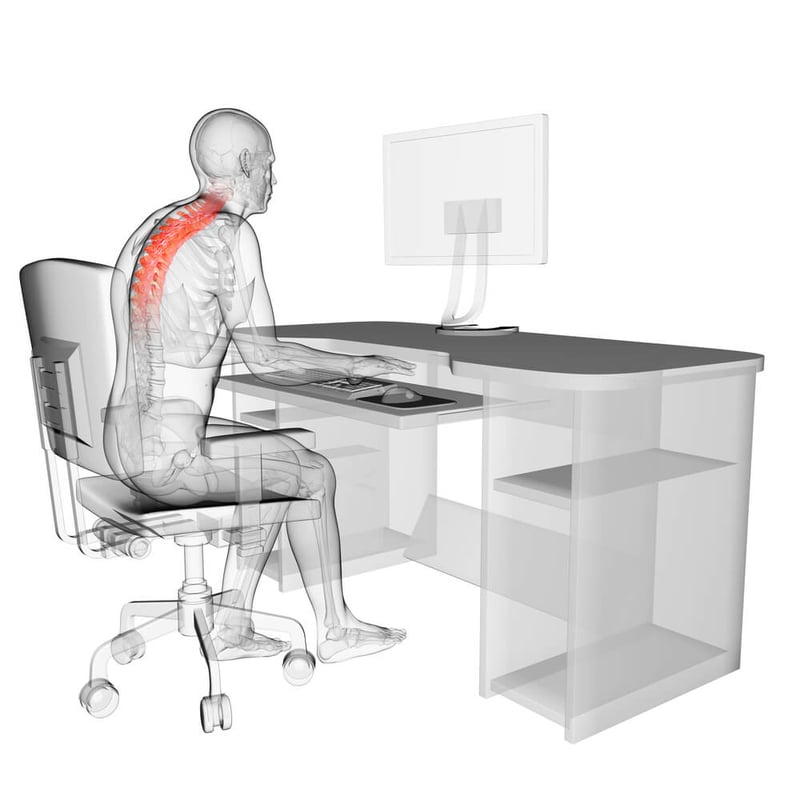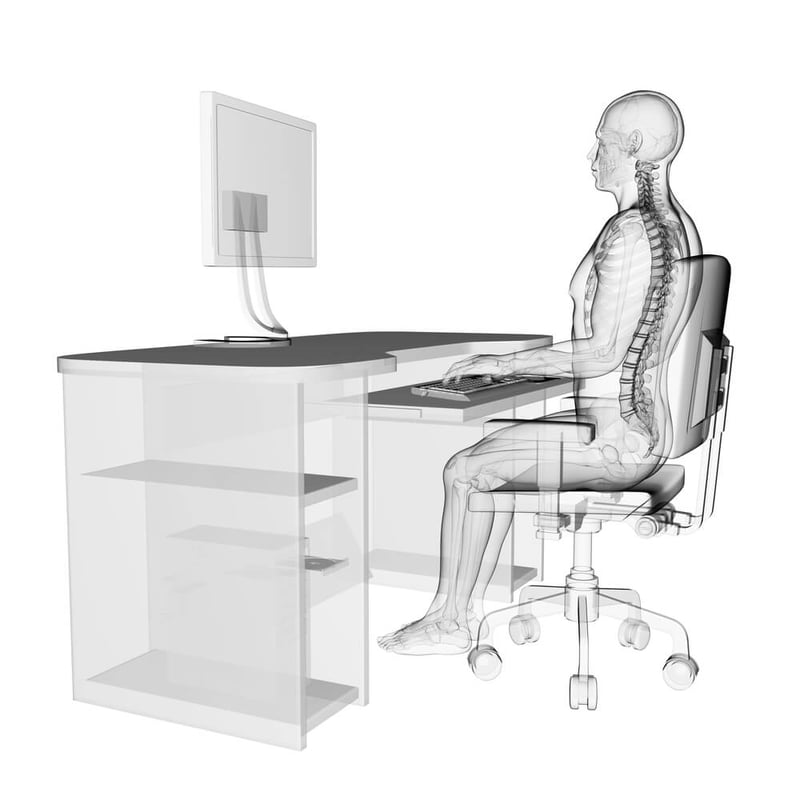
When you’re working, it’s easy to get distracted; your emails are pinging, a co-worker won’t stop clicking their pen, or maybe your back is in agony because your chair wasn’t designed with good posture in mind. Some things you can’t help, which is why you need to address the things you can. That’s why ergonomics is so important.
According to the online dictionary Merriam-Webster, ergonomics are defined as:
er-go-nom-ics
- An applied science concerned with designing and arranging things people use so that the people and things interact most efficiently and safely
- The design characteristics of an object resulting especially from the application of the science of ergonomics
Now you understand what it means, you need to find out why you should care.
Ergonomics in the workplace

So few things are random nowadays. Almost everything is calculated and adjusted to the smallest degree, all to fit the finest specifications and meet maximum efficiency. This is likely true for most of the items you’re surrounded by in your workplace; from your computer keyboards and chairs, to the light switches and bulbs they power. In some cases, they’re a matter of making a product perform better, but in others, it may be a matter of health and safety.
Aesthetics still need to play a part - an office that considered only safety would be fairly uninspiring - and it is the balance of these two that form great design.
What happens when we have to cope with poor ergonomics, though? You’ll likely find that you can ‘get by’, but that phrase isn’t in the vocabulary of the truly productive. Instead, you need to consider how they’re holding you back - and how you can overcome them.
We tackle the former, and the latter, below.
The economics of ergonomics

The old saying goes that you have to spend money to make money, but when it comes to ergonomics, you have to spend money to save money.
When buying in bulk, it can be all too tempting to cut down on costs because you see a potential saving of a few pounds on one item multiply into a saving of potentially hundreds or thousands. As attractive as this may be, when it comes to buying something like a chair that has such a direct impact on an individual, you need to fight the allure of the short term savings.
It may be a few years old, but its message is not outdated. In 2006, Hu-Tech Ergonomics released a paper titled ‘Cost benefit studies that support tackling musculoskeletal disorders’ which analysed the work procedures of several UK businesses across 21 case studies (source). The purpose of this was to examine the cost benefits of ergonomic interventions to cut down on the potential risks of musculoskeletal disorders (also referred to as MSDs) throughout multiple industries.
After thoroughly analysing all case studies, the researchers concluded the following:
“The case studies can be used to provide ideas for ergonomic interventions and to support a business case for the investment of time and money which may be necessary to realise them. The organisations that have carried out this analysis have found the exercise to be very worthwhile and it is hoped that the case studies will have a wider implication by indicating the ways in which MSDs cost money and quantify how their elimination can save money.”
(Source: Hu-Tech Ergonomics)
For more recent data, look no further than this article produced by Health and Safety Executive, a government agency based in the UK. In it, they discuss the costs businesses face when employees suffer work-related injuries or ill health. The graphic below details the split of the cost of injuries in the workplace that were self-reported throughout 2016-2017, which totalled £15 billion.

(Source: HSE)
The individual employee covered the majority of these costs, which represent elements such as healthcare costs and financial loss related to missing work. This financial impact presents a considerable strain on the individual, both financially and also mentally - an injury suffered at work is likely to have a negative impact on that individual’s enthusiasm and work output.
For the employer, costs of £3 billion are also substantial. This represents the work they lose out on from their staff and also the healthcare costs they may help provide.
While we can’t conclude that every injury these figures cover could have been prevented with improved ergonomics, evidence continually shows that improved ergonomics would certainly cut down on these fees that either you as an employee, or you as an employer, may face. That is why it’s so important to pay extra in the short-term, so long-term you can save money.
What are the kind of issues that can be caused by lacking ergonomics, though?
The physical cost of poor ergonomics
The most common injuries caused by this issue are often of a nerve or muscular nature. Below, you can find further information on some of the most highly reported issues people have.
Tendonitis

The severity of tendinitis can vary greatly, but at its worst, it can be very painful and take months to recover from. As you may have gathered from the name, it is the irritation of a tendon, and is more common for adults over the age of 40. While it can be caused by a random and sudden injury, it tends to be the result of repetitive movement over time. As office jobs often require repetitive actions, these are particularly common in workplaces.
Carpal Tunnel Syndrome

When the median nerve gets compressed and eventually trapped at the wrist, then numbness can start to be felt and Carpal Tunnel Syndrome (CTS) can incur. The numbness eventually turns into a pain, which travels up and down the arm over time if left untreated.
One common theme across these three injuries is that in almost every case, quality training and equipment would have reduced the negative effects - or likely just prevented the injuries from ever occurring. Once these issues are present, however, it can make even simple tasks much more difficult to complete, or even impossible in some cases. That’s why it’s important to cut it out before it ever becomes an issue.
Epicondylitis

Also known as ‘tennis elbow’, this may start as just an ache, but if untreated can develop into intense pain. Similar to tendonitis, this is also caused by extensive and repetitive extensions of the wrist and forearm. For this reason, it’s particularly common with people that use a computer mouse often.
Five easy tips for improved ergonomics
The tips below are aimed specifically at office workers that are frequently at their computers, as 81% of all office staff spend between four and nine hours a day sitting at their desk (source).
✔️ Make sure that the mouse and keyboard are close enough to you that you don’t need to stretch to reach them. If there are items that you frequently need, like a phone or a pencil, then make sure that these are also within easy reach and you’re not stretching every other minute for items in hard-to-reach places.
✔️ Move as close to your desk as possible to minimise leaning, which can put unnecessary pressure on the vertebrae in your back. Your head should rest directly above the neck, so the weight is distributed properly and you’re not craning.
✔️ On the topic of neck posture, if you’re often speaking on the phone then make sure that you get a headset that gives you full head movement. Lodging a phone between your neck and shoulder is a recipe for pulls and aches.
✔️ Make sure that your monitors are directly in front of your line of sight. If you have multiple screens, try your best to keep the screen that gets your most attention as central as possible. This is because keeping your neck at an angle for prolonged periods can quickly create discomfort, and can slowly cause actual injury.
✔️ Your feet should always be rested firmly and flatly on the ground; tucking them behind you or leaving them dangling doesn’t provide the support or circulation your feet need. For people with shorter legs, either get a chair that is lower to the ground or - potentially the more cost-effective option - simply get a footrest.
Incorrect posture

Correct posture

With ergonomics, there are few quick and easy wins. Getting an ergonomic mouse won’t instantly heal Carpal Tunnel Syndrome, while sitting with your feet planted properly for just ten minutes of the day isn’t going to be enough either. Fortunately, the pay off can be excellent.
For the employee, you will spend less time in discomfort and the time you do spend working will be much more efficient; potentially no longer limited by aching muscles or twisted discs. For employers, the staff will be in the office more often to complete work, and there should ultimately be far less work-based injuries to pay out over.
Like we said, these aren’t all short-term wins, but a truly great business will appreciate that it’s in the long term that real value and success is found.
